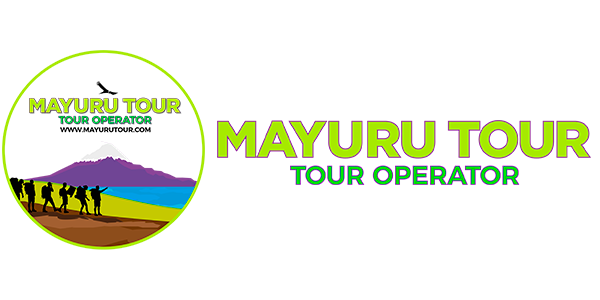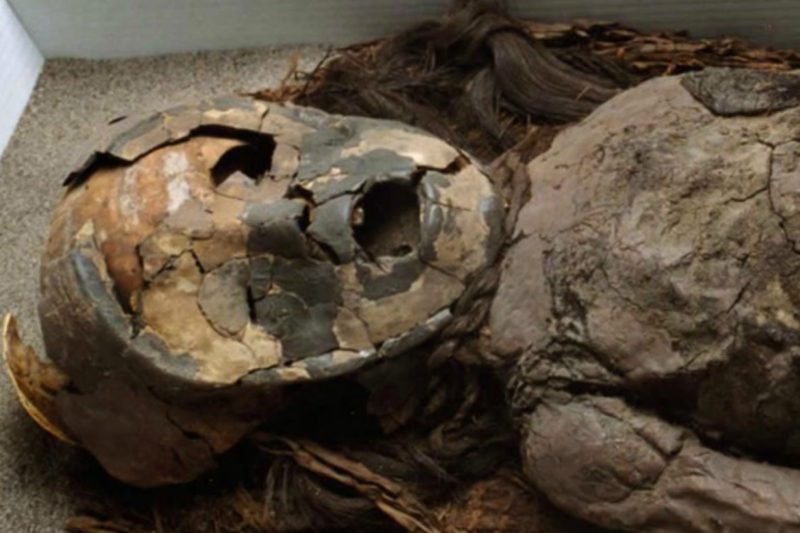LAKES, WETLANDS, SALT LAKES & NATURAL DIVERSITY
A Wonderful Adventure
- Tour Plan
- Info
- Gallery
- Reviews
- Similar Tours
- Day 1
- Day 2
- Day 3
- Day 4
- Day 5
Arica – Village of Socoroma – Putre
We leave the hotel and start our tour to the Terminal Agroprecuario Asoagro (Market) of Arica, but first of all we surprise you with a small trip through the fascinating city of Arica, known for its enjoyable warm climate. Get to know the undeniable beauty of its beaches and bays, reaching up to the Caves of Anzota, where men and women of the Chinchorro culture have lived for thousands of years. Finally you can enjoy a panoramic view over the city from the impressive Morro of Arica.
We continue our tour to the Terminal Asoagro. This typical market of Arica, located in the coastal desert, was created 19 years ago by its merchants and producers. On a walk through the alleys you can get to know the different kinds of fruits and vegetables that grow in the fertile valleys of the region (like the black olive of Azapa) and also the products that are imported from the neighboring countries. Afterwards, we continue to the prodigious Azapa Valley, which is popular for its enormous archaeological development with more than 10.000 years of history. Here you can find surprising geoglyphs like on the Cerro Sombrero (Hut Mountain) or the Geoglyphos de la Tropilla.
The following stop will be the Cerro Sagrado (Holy Mountain), a hill that also presents geoglyphs of mythological figures. The viewing point Las Llosyas is the best place to observe these beautiful geoglyphs. We are going to visit the Archaeological Museum of San Miguel of Azapa which contains some of the most relevant patrimonial relicts of the archaeology in Chile: The most ancient mummies in the world that belong to the Chinchorro culture and are more than 10.000 years old.
We will cross the Lluta Valley, natural exit of the highlands to the ocean. Here, we stop in the very first settlement of the valley, Poconchile. This town is surrounded by fields of alfalfa and well known for its church, Iglesia de San Gerónimo, which was declared national monument due to its impressive beauty preserved since the 17th century. Our way leads us to the Candelabra canyon. It was named after its vegetation, the candelabra cactuses, that are typical for the desert. The branches are usually placed in the upper part of the plant, making it look like a chandelier and giving the cactus its name.
Also, you will get to know one of the most important archaeological complexes in the area, the fort Pukara de Copaquilla, declared national monument and surrounded by an impressive canyon of about 150m of depth.
We will stop at the Tambo Sapahuira to have lunch, are you will get the possibility to try the typical food of the Chilean highlands. Our excursion through the North then continues to the village of Socoroma, outstanding for its architecture and its beautiful green terraces. The first day of the tour finishes with the arrival in Putre. Dinner and accommodation.
Putre – National Park Lauca – Lake Chungara – Putre
The tour starts in the morning in Putre. Our destination is the National Park Lauca with an expanse of 137.883 hectares, a biosphere reserve that covers the foothills and the highlands in the northeastern region of Arica and Parinacota. We start our day with a short hike through the sector of the caves. In this district, you can get to know the paradisiacal landscapes of the highlands, 4.300m above sea level, and you can observe the so-called Vizcachas. What makes this hike special is the mystical ambience that surrounds the region. It is believed that there are men living in this area who are over 9000 years old, and sometimes they are still seen, walking the paths of the highlands. They are said to be the very first visitors who appreciated the beauty of the landscapes.
Our journey continues to the viewing point of Chucuyo, which is located in the center of the National Park Lauca. Take some time to observe and learn about a unique ecosystem and an extraordinary flora and fauna. From here, we continue to the Lagoons of Cotacotani. This lagoon consists of different lakes and volcanic islands, providing evidence of the high volcanic activity of this zone. The viewing point lies in the middle of the wetlands and is the perfect spot to observe the great variety of plants and animals, such as the parinas, ducks, vicuñas, vizcachas and taguas.
We will be moving on to one of the most beautiful attraction of the National Park Lauca, the Lake Chungara, which is located over 4.500 meters over sea level and is one of the highest lakes in the world. It’s magical beauty and the marvelous reflection of the volcano Parinacota amaze thousands of tourists every year. On the other side of the lake, you can see the famous volcanoes Payachata (twin volcanos), about which many legends are told due to their mystical appearance. For example, people say that they house an old treasure of the Inca, and others say that they are a couple in love.
On our way back, we will visit the village of Parinacota which was declared national monument. Here, you can discover the ancient architecture of the highlands. The old houses are all made of adobe and have a great historical value, for they contain relicts of the time of colonialism and are symbols of the Aymara-culture. At the end of our excursion we enjoy a bath in the thermal springs of Jurasi, located in the middle of a small canyon. They are well known for its medical purposes, for example, they are recommended in case of rheumatism.
After enjoying all these different landscapes and regaining our strength with a warm thermal bath, we will return to Putre, where we started the excursion to this wonderful world in the Chilean highlands.
Putre – National Reserve of the Vicuñas – Salt Lake Surire – National Park Vulcano Isluga – Andean Villages – Colchane
The next day starts again from the beautiful town of Putre. We leave the village in direction of the National Reserve of the Vicuñas which, as its name implies, was created to preserve the vicuña. The flora and fauna of this place are very attractive as they include a great variety of species. In the National Reserve Las Vicuñas, you can discover majestic sceneries that are typical for the Chilean Highlands. We will explore the towns of Ancuta, consisting of just 5 houses, and Guallatire, located at 83 km of Putre at the foot of the volcano Guallatiri. Here you can enjoy the beautiful view of its peak covered in snow.
The journey continues, reaching the most captivating destination of this tour, the salt lake Surire. It is located at 4,200 m above sea level. Surire was declared national monument and is a truly magical place. The intensely white salt deposits contrast with the pure blue of the water of the lagoons, without doubt a delight to your eyes. The salt lake of Surire also preserves the existence of valuable species such as the ostrich (ñandu), flamingo, vicuña, alpaca and the llama, among others. And also the precious flamingos find their habitat in this extraordinary ecosystem: three out of the six existing flamingo species are regularly seen around the salt lake.
We will continue the tour to the Nationl Park Vulcano Isluga, located more than 4.000m above sea level, crossing the paths of the highlands, the desert and the pampa. The diversity is impressive and allows you to appreciate different landscapes within the park, such as the lagoon Arabilla, surrounded by small bofedales (wetlands) and forests of Queñua (typical tree of the highlands).
Afterward, we will be visiting the altiplanic communities of Enquelga and Isluga that are located in the middle of a bofedal where Llamas and Alpacas graze. Also, the churches made out of adobe are very beautiful to see. Finally, we will get to our destination Colchane, a typical Aymara village at the border to Bolivia at an altitude of 3.750m.
Colchane – Cariquima – Pica
We leave Colchane in the early morning. Close to the border on the flanks of the mountains you will discover the giant cactuses that reach up to 10 meters high and can only be found in this area at an altitude of more than 3.700m. We will pass through the town of Cariquima, another representation of the ancient Aymara life that serves as a central meeting point of the indigenous cultures. It has been famous for many centuries for its beautiful handicrafts. Also, we are going to visit Chusmiza, a paradise at 3.200m above sea level surrounded by idyllic nature.
Afterward, you will get to know the biggest artistic representation of a human being in the world: The Atacama Giant, located at the flanks of the Cerro Unita (Unita Mountain) some kilometers away from the village Huara. This geoglyph attracts thousands of tourists every year and is considered one the most impressive geoglyph in the north of Chile. The figure measures 86 meters, representing a pre-Inca human. There are many interpretations about the meaning of this place. For example, people say that the geoglyph represents a god of an ancient culture that lived in the area around 1.000 and 1.400 b.C.
We will stop in the village of Huara, a place with favorable climatic and geographic conditions that convert it to a paradise for adventure- and eco-tourism. Here we will have lunch.
Continuing our trip, we will arrive at the most impressive nitrate mine of Chile. Humberstone was declared World Cultural Heritage by the UNESCO in 2005. While today it is only a ghost town, it has become an important tourism attraction in the region. Rust and ruins symbolize the beauty, remoteness and silence of this ex-nitrate-mine.
Finally, we will reach beautiful Pica in the evening. This little oasis in the middle of the desert contains a precious ecosystem that combines the different landscapes of the pampa, the highlands and the desert. Accommodation in your hotel.
Pica – Geoglyphs Pintados – Desert – San Pedro de Atacama
We will leave Pica to visit one of the most important archaeological heritages, the Pintados Geoglyphs. These unique stone images contain more than 400 figures in 66 panels representing humans, animals, birds and abstract paintings. Without doubt, it is a fascinating representation of the ancient cultures.
The tour takes us further through an impressive forest in the Atacama Desert, the National Reserve of the Pampa Tamarugal. This reserve includes more than 24 thousand hectare of artificial plantations of the Tamarugo tree and is surrounded by a number of salt lakes. If you are lucky, you can spot some reptiles that adapted to the climate and are able to survive the dryness and the heat of the desert.
Later, we will pass the village of Quillagua, a small oasis located at the shore of the river Loa. Here you will find a church, a train station and the old customs building. According to the National Geographic, Quillagua is the most arid place in the world.
Finally, we will cross the desert to get to San Pedro de Atacama, where our tour ends.
This trip is an adventure full of miracles that you can only experience in the Chilean Altiplano. Lakes, wetlands, salt lakes and an enormous biological diversity are part of this exceptional landscape. Indeed, so great, arid and colorful, the highlands will make you experience an unique trip and let your visit to the North of Chile to become one of the most fascinating experiences in your live.







There are no comments yet.